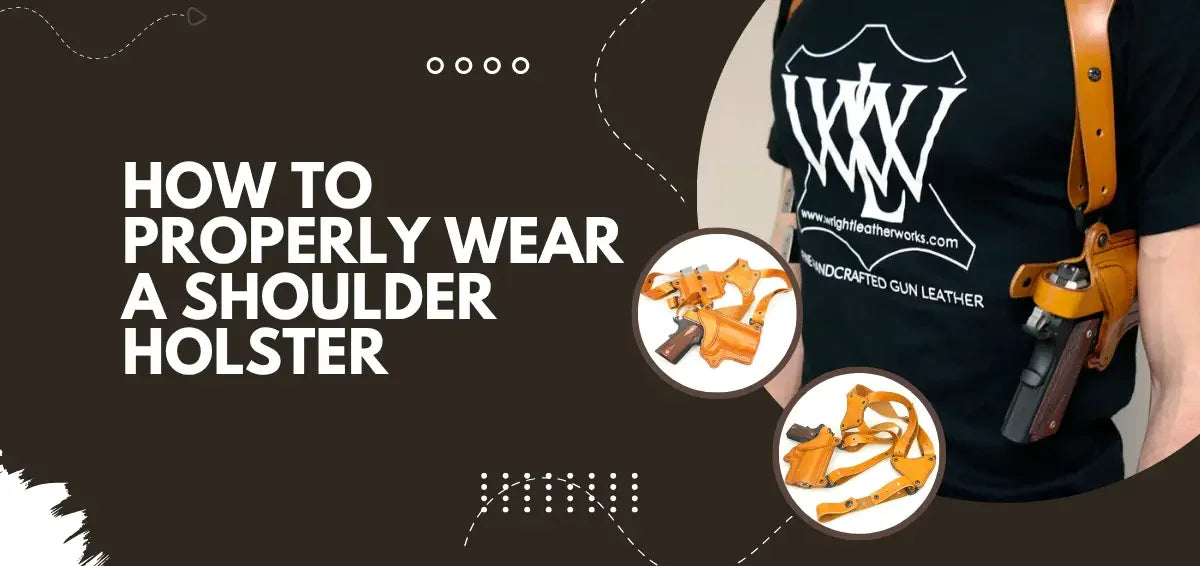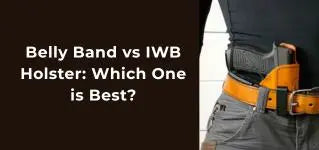A shoulder holster keeps you ready for action and facing difficult situations. However, wearing it properly can be tricky. Whether you are a newly-appointed law enforcement officer or have been in the field for quite some time, mounting the holster is always intuitive. Therefore, it is essential to learn how to properly wear a shoulder holster. The right positioning ensures that you don’t have to struggle whenever it’s time for combat.
The blog guides you through a detailed process of wearing a shoulder holster. We will also discuss proven tips for maximum comfort and retention. Let’s understand the basics first and build a strong foundation for you.
What Are the Components of a Shoulder Holster
A shoulder holster is not a solo gear. Rather, it is made from a few essential components to provide reliability and retention. Let’s take a look at them:
Body and Harness System
The holster body is the space where you keep your weapon secure. It’s moulded in the shape of your pistol for proper fit and is attached to a harness system.
This harness is a pair of straps that you carry on your shoulders and create an “X” or “Y” configuration. The role of the harness system is to support your firearm’s weight and keep it from budging.
Magazine Pouch
There’s usually a magazine pouch on the opposite side of the holster body. This additional section is useful for:
- Distributing the weight of the weapon equally on your shoulders
- Hold accessories like spare magazines, handcuffs, and a flashlight
A pouch keeps you ready with extra accessories and ensures that you do not slouch due to the weight on a single side.
Straps and Sliders
A shoulder holster mounts on your back, so there would be straps for comfort. These adjustable straps are joined with sliders or buckles for quick adjustment. Contouring to your body properly, this retention system ensures that the holster doesn’t shift during movement.
Step-by-Step Guide: Wear a Shoulder Holster Properly
Here is a detailed process of sliding the shoulder holster comfortably on your back:
Step 1: Wear the Harness
The first thing is to slide your arms through the holster straps and wear it like a backpack. Your harness should create an X or Y cross on the back. Take care that the gun holster is placed on the opposite side of your controlling hand.
Step 2: Adjust the Harness for Fit and Balance
Use the buckles or sliders to adjust the holster after wearing it. You need to tighten it so the concealed carry doesn’t move and sits directly under your armpit. Now, adjust the harness and keep the magazine pouch at a height similar to the holster. This practice helps maintain an equal weight on both of your shoulders.
Step 3: Secure the Straps
Most of the holsters have tie-down straps. Their role is to shift the cover and pouch towards your belt. The straps have to fit properly to ensure that the holster rig doesn’t move during action. Although this step is optional, it is recommended for people owning full-length firearms.
Step 4: Test Your Shoulder Movement
Now that you have secured the shoulder holster, test your range of motion. Sit down, walk around, and stretch your arms. See if there is any discomfort or adjustments required. While you are checking for comfort, you can also see if the holster causes printing.
Step 5: Practice Drawing
To follow this step, first take care that your firearm is unloaded. Now, raise your dominant hand and reach your other side to pull out the weapon. Understand how smooth it is to draw and how much time it is taking. Repeat this movement until you feel ready.
Clothing Tips to Improve Retention
A shoulder holster sits right underneath your arms, making it difficult to conceal the weapon. Therefore, it is necessary to wear clothes that prevent drawing unnecessary attention and keep the holster from printing. Take note of these smart clothing tips for your next use:
Pick the Right Outfit in Summer
- The best thing is to conceal the holster with a loose, button-down shirt. It should be long enough to reach your mid-hip region.
- Wear a denim shirt that is draped properly on your skin and conceals the firearm printing.
Layer Up in Winter
- Pair a hoodie or sweatshirt with an undershirt to keep your shoulder holster hidden.
- The layer will hide the setup and prevent direct skin contact.
- There should be neither a sweat build-up nor printing.
Long-Term Wear Tips
A shoulder holster is an ideal choice, especially if you have to sit or drive throughout the day. However, if you don’t adjust it correctly, there will be major discomfort and minimal retention. Follow some of these tips to reduce fatigue and keep the concealed carry on your back for hours:
- Balance the Load: The harness straps are to be adjusted to ensure that the weight is equally distributed. Tighten or loosen the grip according to your body’s comfort.
- Break In Before Use: Rather than going to work the first day you purchase a shoulder holster, give it time. Wear it around the house and let it adapt to your body’s contour. Practice taking out your gun regularly, as it will help you adapt to the movement.
- Adjust as per your Requirement:Modify the height of the holster so that it doesn’t sit right below your armrest or seat. Also, remember to loosen the tie-down grip so the holster is easy when you are seated.
Common Mistakes to Avoid While Wearing a Shoulder Holster
Although a shoulder holster is comfortable and maintains retention, the wrong setup results in unsafe handling and inconvenience. Here are some of the mistakes you can avoid while putting on the harness:
- Don’t wear a shoulder holster that’s too loose or too tight. Fix the harness to maintain proper balance on both sides.
- Make sure there’s equal weight distribution on both sides. An imbalance results in intense pressure and discomfort for long hours.
- Don’t wear tight or ill-fitted clothes as they increase the chance of getting a rash. Oversized and structured clothes help conceal your weapon effectively.
FAQs
-
Should I wear the shoulder holster on the right or left side?
The holster’s position depends on your dominant hand. You should wear it on the opposite hand for cross draw. -
Should my shoulder holster be extremely tight?
Yes, the holster straps should fit snugly. However, don’t tighten them so much that you cannot move your arms. -
Which clothes are useful for a shoulder holster?
Preferably, wearing oversized clothing is best for shoulder holsters. -
Is a vertical shoulder holster better than a horizontal holster?
Yes, a vertical holster offers more concealability than a horizontal carry. However, the right choice depends on your needs and preferences.






Leave a comment (all fields required)